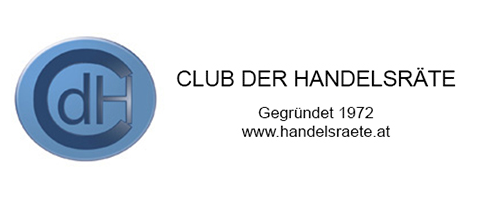Eco Austria
Popular myths in the economic policy debate... and how to bust them
The first event of CdH in 2019 took place in the premises of Deloitte Tax Wirtschaftsprüfungs GmbH on 17 January 2019. Dr. Tobias Thomas, Director of Eco Austria, spoke about "Popular myths in the economic policy debate... and how to bust them". Close to 20 members of the Club followed his most interesting presentation.
Eco Austria is an independent economic research institute organised as a non-profit organisation based in Vienna successfully active nationally and internationally. Established in 2012 and, its research agenda focusses primarily on the ex-ante and ex-post evaluation of economic and social policy measures. Eco Austria conducts independent and evidence-based economic research of high quality to facilitate a science-based debate. Clients include Federal Ministries, Provincial Governments, and the European Commission.
In addition Dr. Thomas is lecturer and Head of the Political Economy research area at the Düsseldorf Institute for Competition Economics (DICE) as well as CMDS Fellow at the Central European University (CEU) in Budapest. Since 2007, Thomas has been Chairman and Founding Member of ECONWATCH - Society for Policy Analysis, an independent and non-profit organisation in Berlin that reports about economic policy in a scientific manner and identifies reforms opportunities. Furthermore, Thomas is member of the standing field committee for Economic Systems and Institutional Economics of the German Economic Association, one of the largest professional economics associations in Europe.
After the welcome speeches of Mag. Herbert Kovar, Partner, Deloitte, and Deputy Secretary-General of CdH as well as Ron Willis, President, CdH, Dr. Thomas gave an overview on the activities of Eco Austria with its enormous competence. This was followed by his analysis concerning "Popular myths in the economic policy debate... and how to bust them."
He picked out 12 popular myths, which he thinks are not true:
Myth 1: Austria is economically back on top: It is recovering after years of sluggish growth.
Myth 2: Labour market is fine in Austria: as a matter of fact the labour market is better now, unemployment decreases, however it is still too high
Myth 3: Economic growth will solve the debt problem: The current upswing reduces public debt towards 60% of GDP. However Dr. Thomas points out to the fact that people get older and pension age should be later. Otherwise more public debt has to be expected in 2023, reforms are needed.
Myth 4: Cuts in public expenditures lead to worse public services: not necessarily: Austria has high educational expenses, higher than Netherlands and Finland but they are higher ranked. Health care sector: France and Spain are spending much less but life expectancy is higher.
Myth 5: Income gab between rich and poor: since 2007 no more increase
Myth 6: Inequality hinders economic growth: IMF and OECD believe it is only true up to 5.000 USD per year. That means in 126 of 175 countries it is not true.
Myth 7: Minimum wages lead to more consumption: this argument is wrong. Austria already has the highest minimum wage in Europe. A minimum wage which is too high becomes a problem for the economy.
Myth 8: Migrants cost more than they contribute: generally not true: it depends on the educational structure - low, medium or high qualified.
Myth 9: Digitalization destroys our jobs, we will be replaced by robots: not true: there is no connection overall.
Myth 10: Solution: robot tax on machines: this would not be good, slowing down investments, affect employment negatively in the mid term.
Myth 11: Trump's tariffs good for US? Not true: only partially more jobs for a short term, not long term - to the contrary. Furthermore consumer goods become more expensive, consequence: less consumption. Finally consumers would have to pay the price.
Myth 12: EU sanctions against Russia harm Russia only: They harm both sides
In general Dr. Thomas suggests as guidelines for more growth, wealth and civil security more facts, less myths and a more science based public debate.
The presentation of the myths was followed by extensive discussions



